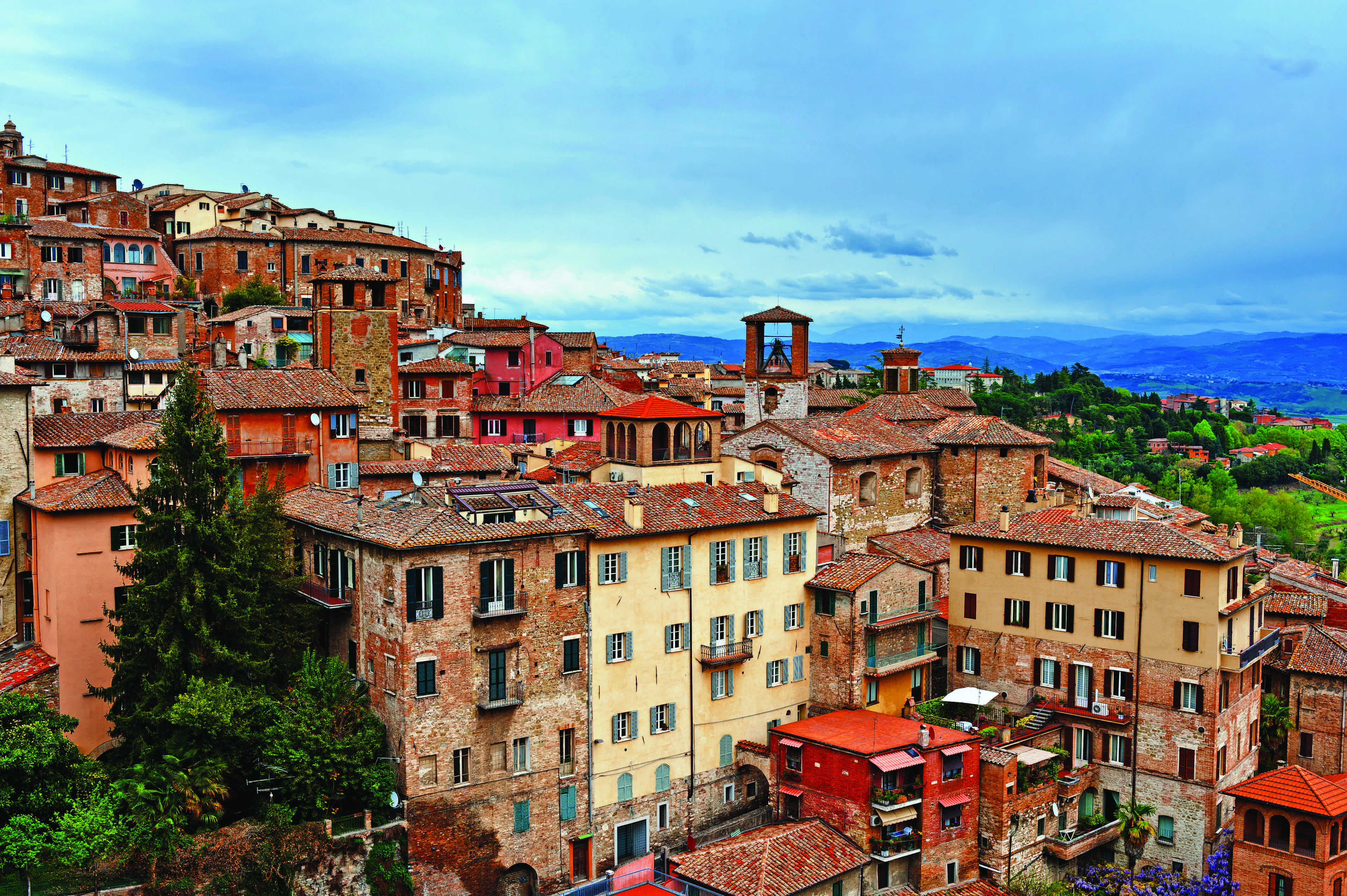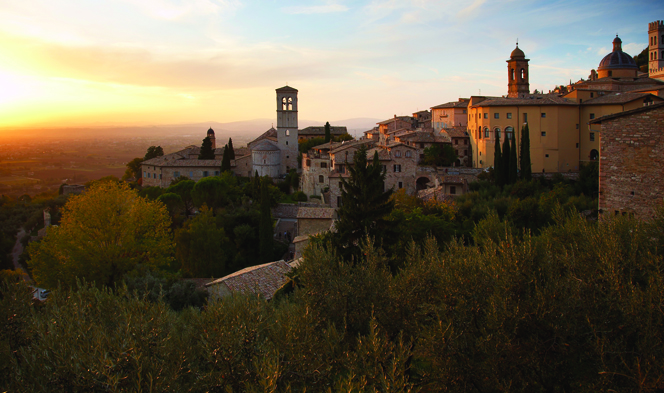Join us to celebrate the delights of a visit to this historic Umbrian city and its surrounding hill-towns

Umbria has already been nominated as the next Tuscany, the region on its northern border. However, Umbria is a big place and the overflow of visitors from Tuscany hasn’t yet spoiled this peaceful, rustic region where the natural and the man-made seem to exist in harmony.
Umbria’s capital is the city of Perugia, which beneath its rather plain exterior has some interesting ruins that tell how the Etruscans – a sophisticated pre-Roman civilisation that settled in most of western Italy – forced out the local people: they were later conquered by the Romans. Perugia is organised around the broad Corso Vannucci; start the day with a cappuccino at one of its cafés while watching life ebb and flow along the street.
At the far end of Corso Vannucci, the Piazza IV Novembre is the focal point for Perugia’s student nightlife, with bars and restaurants, plus Perugia’s Duomo. Opposite the Duomo is the Palazzo dei Priori, an imposing palace open to the public and containing medieval frescoes. More frescoes, by local artist Pietro Vannucci, can be seen further down Corso Vannucci in the Collegio di Cambio, the city’s old money exchange.
But to get a true sense of Umbria’s art and history, you’ll have to leave Perugia and visit some of the nearby medieval hilltop towns. The town of Assisi is just a short drive east from Perugia (and there are regular buses). As the birthplace of Italy’s most well-known saint, Saint Francis of Assisi, it attracts a large number of pilgrims. They come to see the Basilica di San Francesco, Umbria’s most impressive attraction. The shrine, its interior layered with frescoes, contains one of the most fascinating art exhibitions outside a gallery, and anyone with an interest in Italian art will enjoy seeing the progression in style and technique through the ages, the summit of the collection being work by Simone Martini and Pietro Lorenzetti. Saint Francis is buried in the basilica’s crypt.
Make your way north for Umbria’s best medieval town, Gubbio. Without a saint of its own, it doesn’t have the footfall of Assisi, but it does have the best-preserved medieval centre of any Umbrian town.

